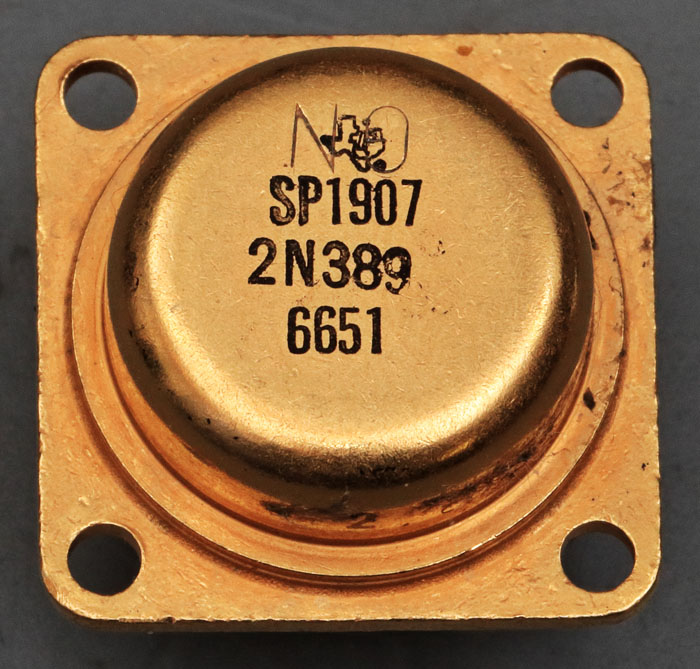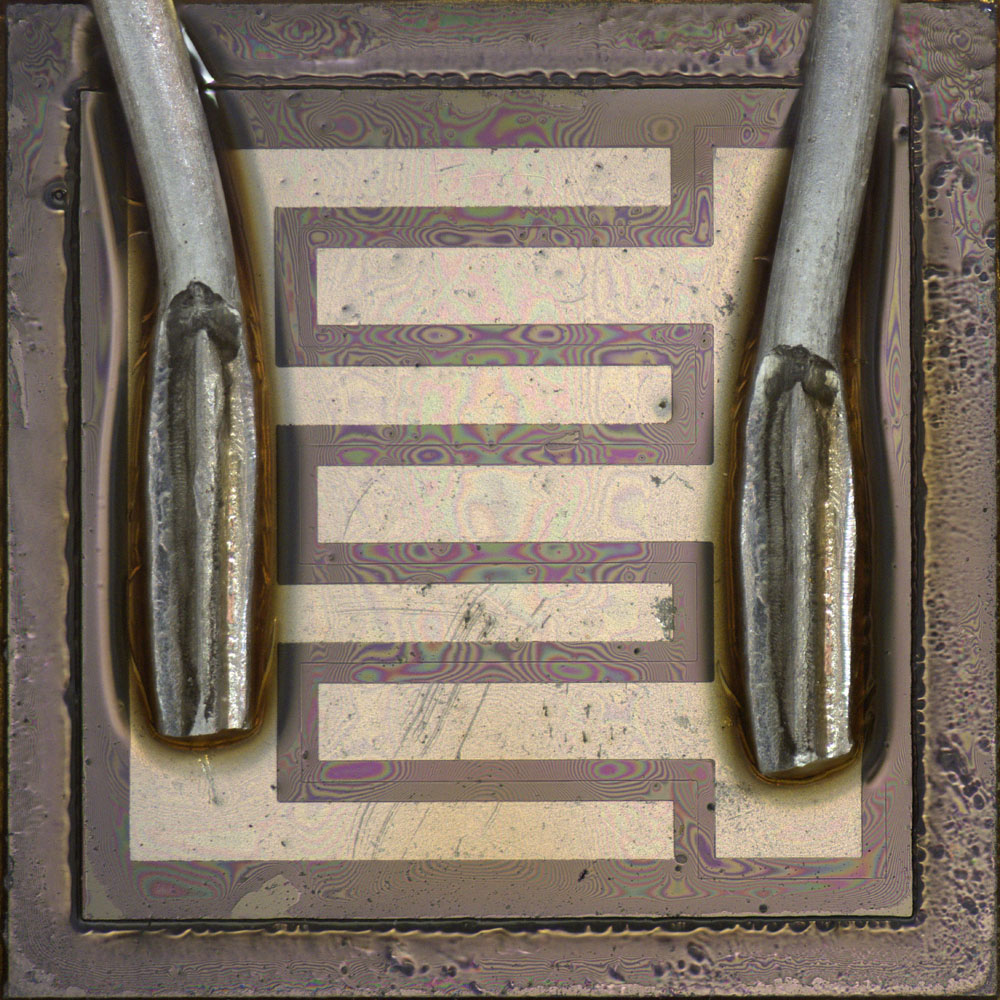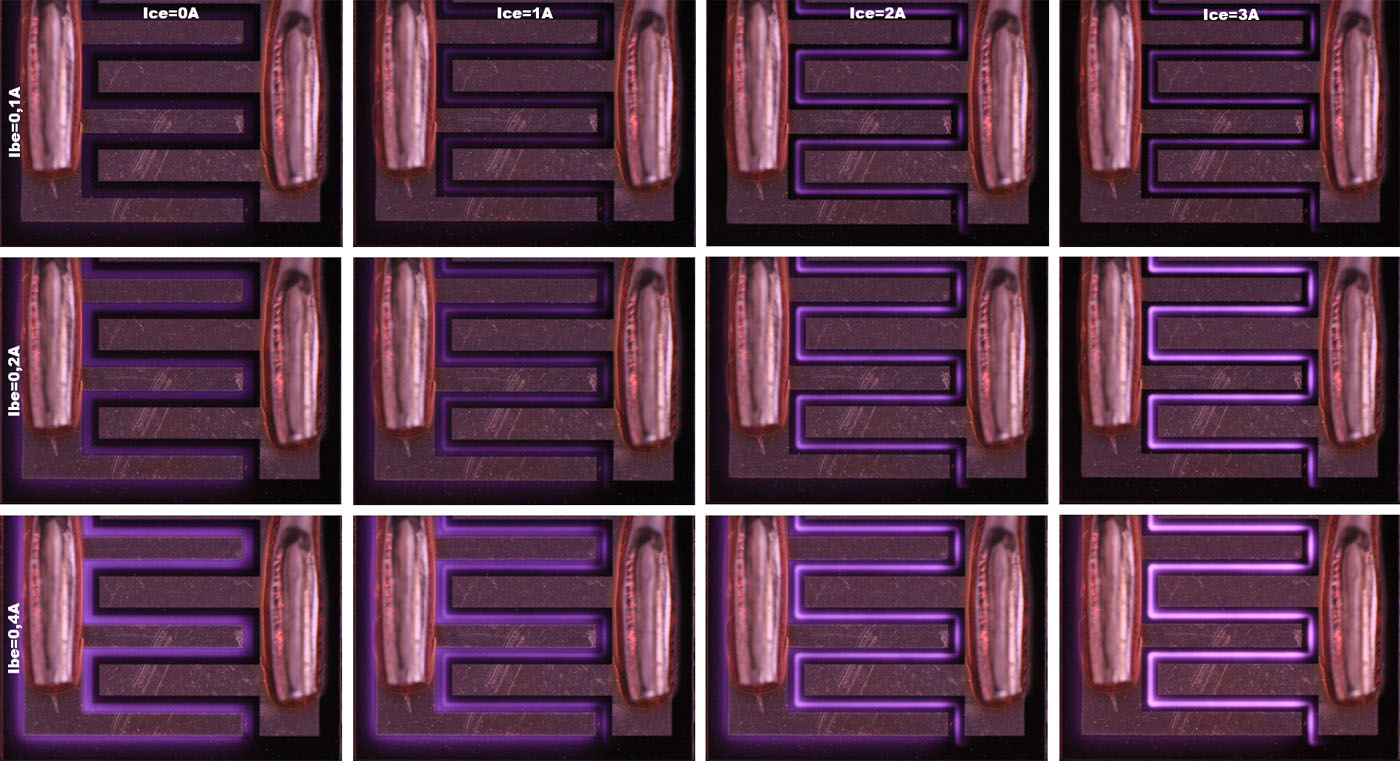

I once again took the 2N389 with its wide gap between the base and the emitter metallization and took some IR pictures...

Compared with the SF137 here the base current is on the Y-axis and the collector current is on the X-axis. Without collector current, only the base region is illuminated, below which at the base-collector junction much of the recombination occurs. As the current increases, the light intensity increases.
At high base currents the luminous effect and thus most of the recombination shifts from the base area to the emitter area as the collector current increases. Here, the base current no longer flows via the collector to the emitter, but directly to the emitter in the base layer. At a base current of 0,4A and a collector current of 1A, the separation of base and emitter area can be seen nicely.
At low base currents (0,1A) and high collector currents (3A) the light is concentrated at the edges of the emitter surface. That´s were current crowding takes place, and a large part of the collector-emitter current flows through the edges. The transistor no longer operates in saturation here. In contrast to the SF137, the concentration of the luminance does not increase the brightness.

At a higher magnification, the images appear darker in particular. Otherwise, no other special features can be seen.
https://www.richis-lab.de/BipolarA09.htm#IR 